Abstract
In order to develop transcutaneous oxygen tension (PtcO2) measurements into a practical method for assessing peripheral vascular disease, the relationships between extremity and chest wall PtcO2 were examined in subjects with and without systemic atherosclerotic disease. The ratio of extremity to chest PtcO2, or transcutaneous regional perfusion index (RPI) assessed limb oxygenation more reliably than did direct PtcO2 measurement by obviating the effects of changes in systemic oxygen delivery upon local PtcO2. The authors find that transcutaneous oximetry can be used during treadmill exercise testing and that the RPI is unchanged by exercise in all normal subjects. PtcO2 and RPI were then measured during rest, position change, and exercise testing in patients with intermittent claudication. Whereas normal subjects maintain a constant thigh and calf RPI during exercise, patients with intermittent claudication consistently manifested large decreases in RPI in these areas when they were exercised until symptomatic. The authors find no overlap between the responses of normal subjects and patients with claudication; positive findings are, therefore, highly specific for exercise-induced limb ischemia. Since transcutaneous RPI exercise testing is easily performed and highly reproducible, it is well suited to clinical use in the diagnosis and documentation of intermittent claudication. Furthermore, since limb ischemia can be quantified, this method lends itself both to grading the severity of disease and to evaluating clinical progression of disease. It is suggested that such a quantitative approach to evaluation of intermittent claudication may allow refinement and extension of the indications for operative intervention in patients with intermittent claudication.
Full text
PDF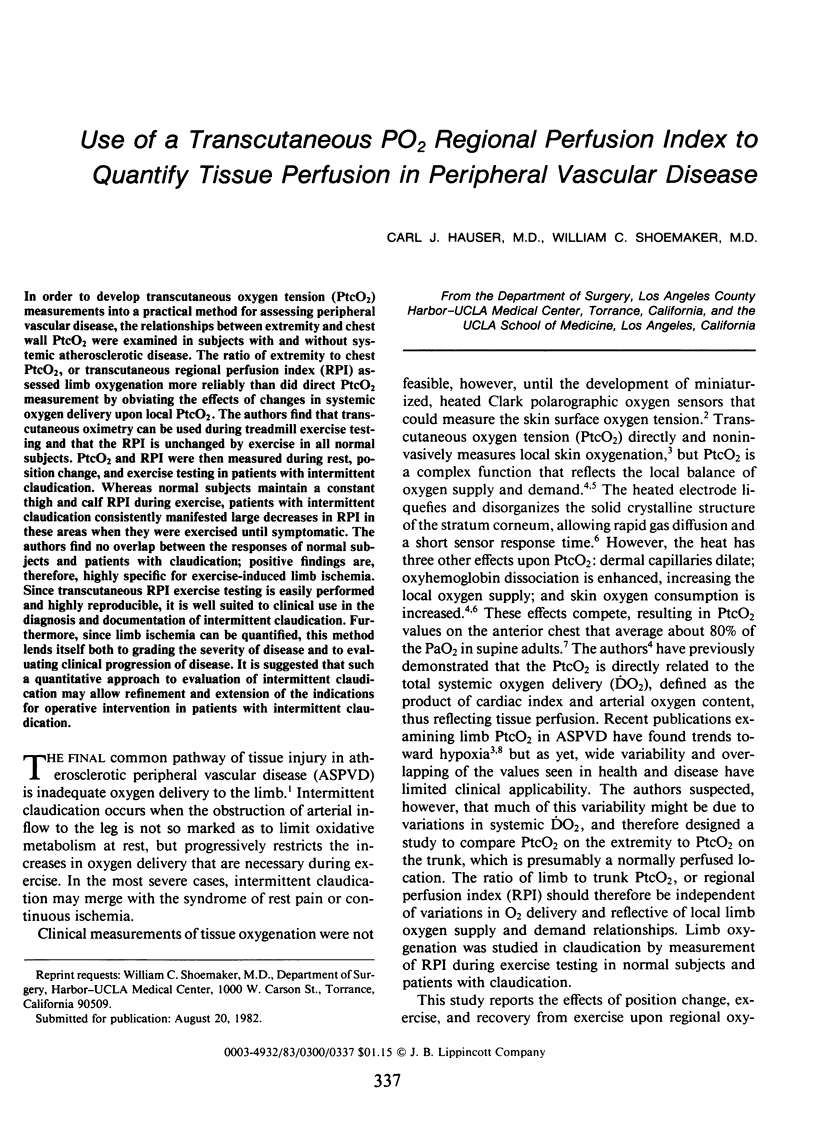
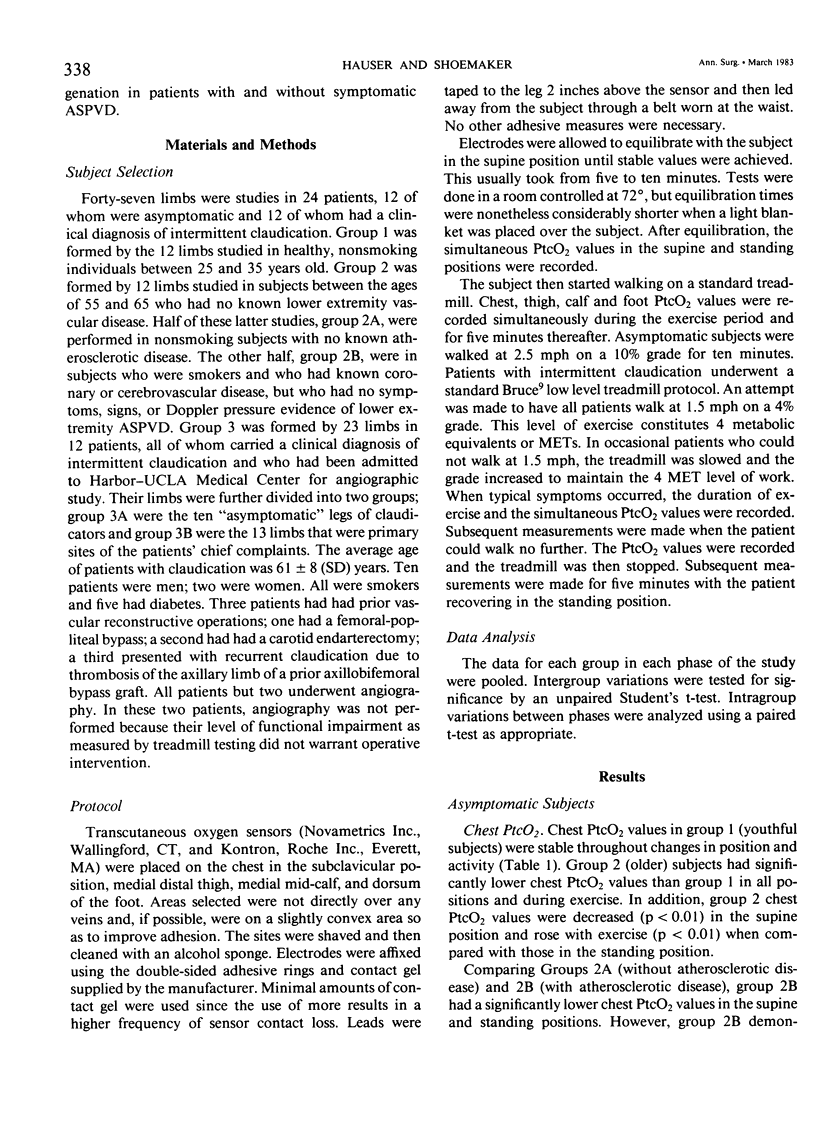
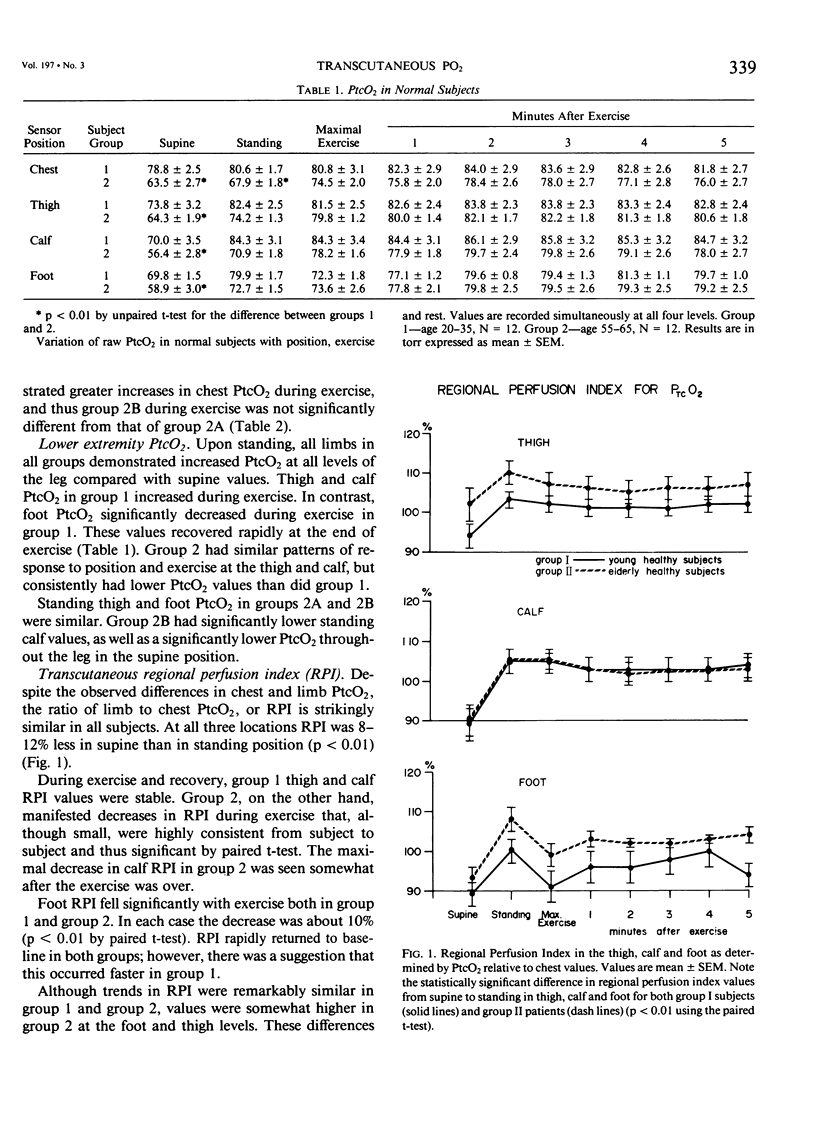
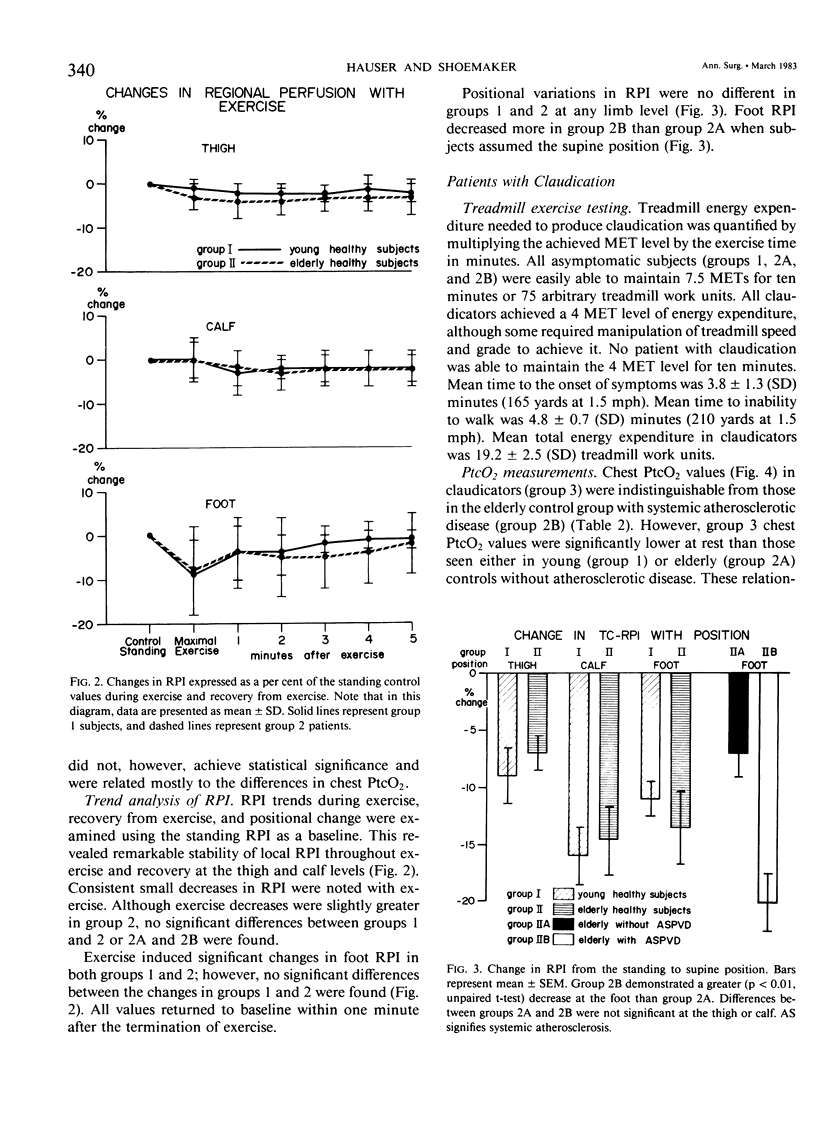
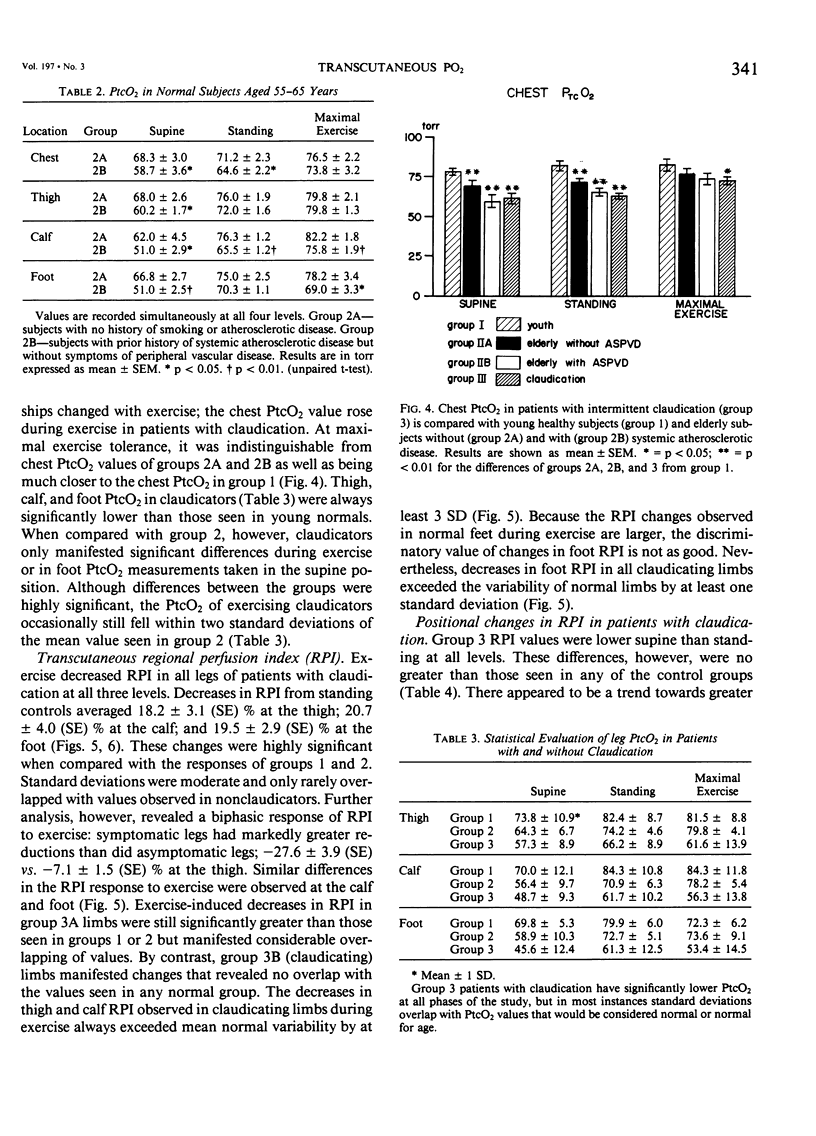
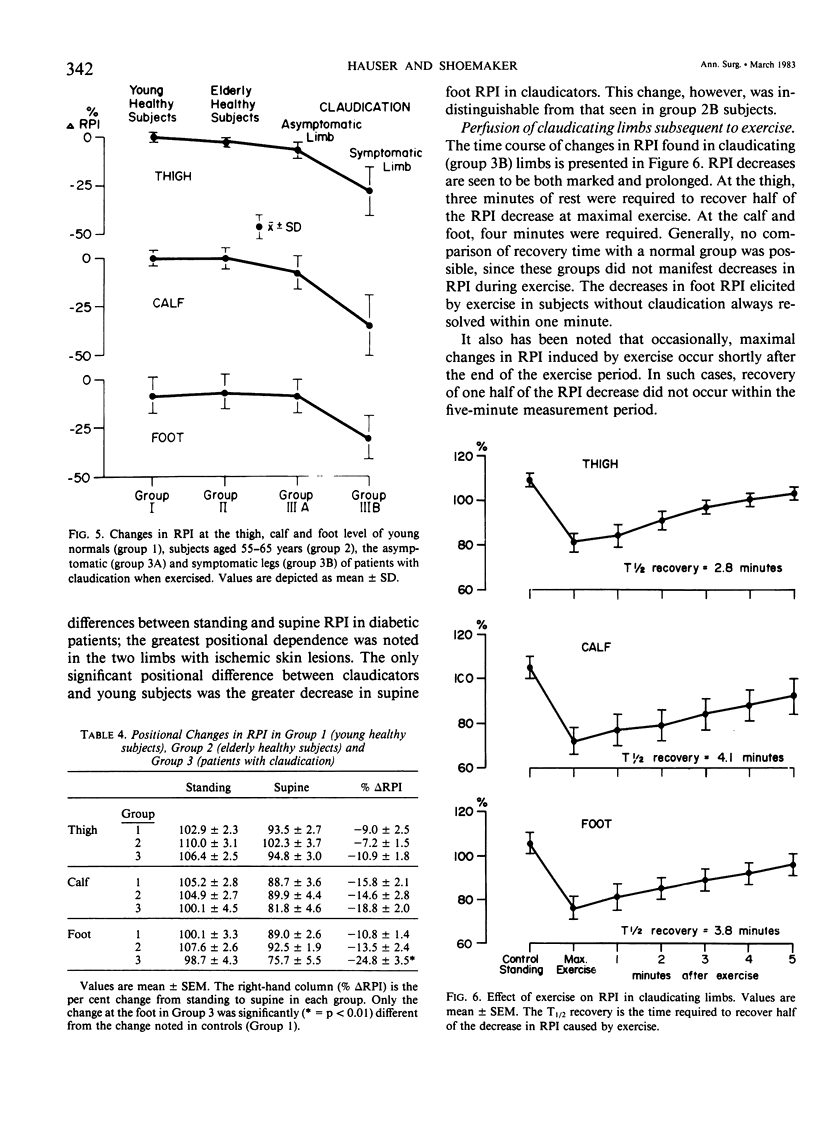
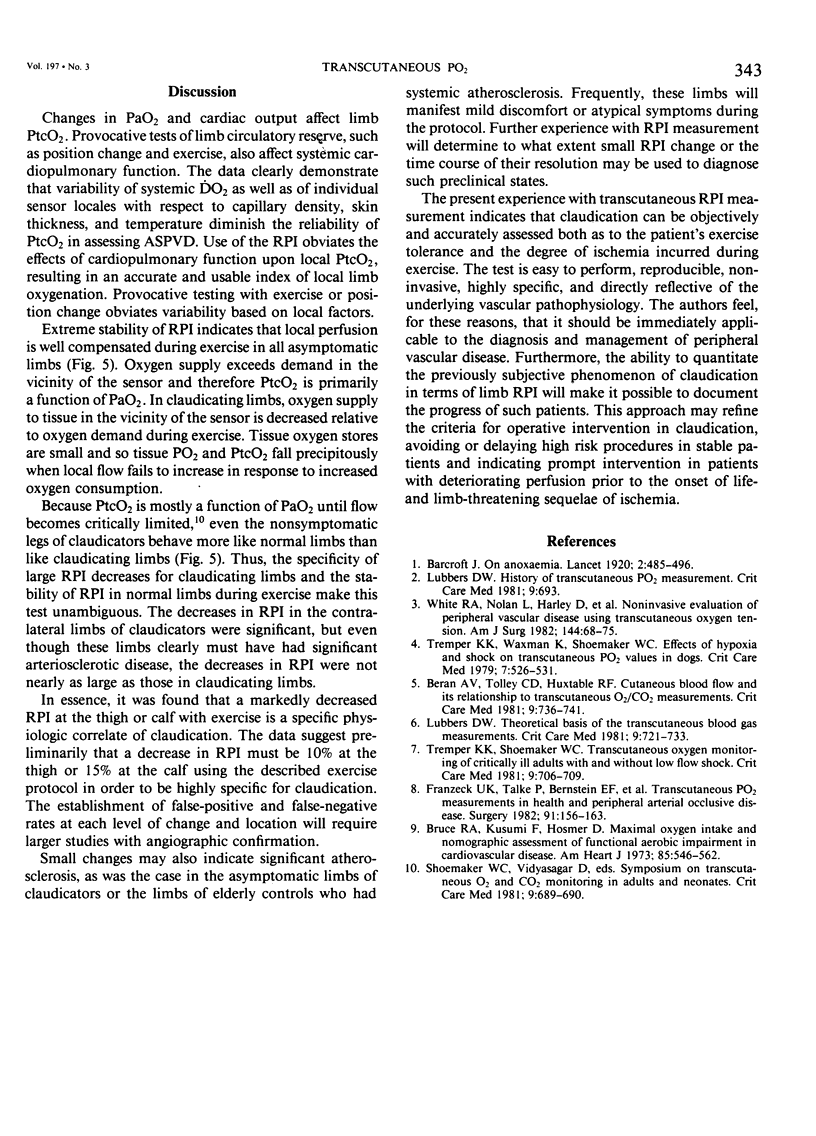
Selected References
These references are in PubMed. This may not be the complete list of references from this article.
- Beran A. V., Tolle C. D., Huxtable R. F. Cutaneous blood flow and its relationship to transcutaneous O2/CO2 measurements. Crit Care Med. 1981 Oct;9(10):736–741. doi: 10.1097/00003246-198110000-00013. [DOI] [PubMed] [Google Scholar]
- Bruce R. A., Kusumi F., Hosmer D. Maximal oxygen intake and nomographic assessment of functional aerobic impairment in cardiovascular disease. Am Heart J. 1973 Apr;85(4):546–562. doi: 10.1016/0002-8703(73)90502-4. [DOI] [PubMed] [Google Scholar]
- Franzeck U. K., Talke P., Bernstein E. F., Golbranson F. L., Fronek A. Transcutaneous PO2 measurements in health and peripheral arterial occlusive disease. Surgery. 1982 Feb;91(2):156–163. [PubMed] [Google Scholar]
- Lübbers D. W. History of transcutaneous PO2 measurement. Crit Care Med. 1981 Oct;9(10):693–693. doi: 10.1097/00003246-198110000-00003. [DOI] [PubMed] [Google Scholar]
- Lübbers D. W. Theoretical basis of the transcutaneous blood gas measurements. Crit Care Med. 1981 Oct;9(10):721–733. doi: 10.1097/00003246-198110000-00011. [DOI] [PubMed] [Google Scholar]
- Tremper K. K., Shoemaker W. C. Transcutaneous oxygen monitoring of critically ill adults, with and without low flow shock. Crit Care Med. 1981 Oct;9(10):706–709. doi: 10.1097/00003246-198110000-00007. [DOI] [PubMed] [Google Scholar]
- Tremper K. K., Waxman K., Shoemaker W. C. Effects of hypoxia and shock on transcutaneous PO2 values in dogs. Crit Care Med. 1979 Dec;7(12):526–531. doi: 10.1097/00003246-197912000-00003. [DOI] [PubMed] [Google Scholar]
- White R. A., Nolan L., Harley D., Long J., Klein S., Tremper K., Nelson R., Tabrisky J., Shoemaker W. Noninvasive evaluation of peripheral vascular disease using transcutaneous oxygen tension. Am J Surg. 1982 Jul;144(1):68–75. doi: 10.1016/0002-9610(82)90604-3. [DOI] [PubMed] [Google Scholar]


